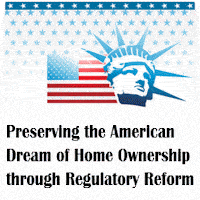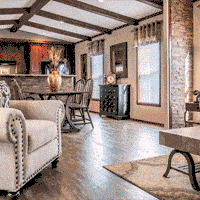A new HUD report to Congress, published on February 22, 2013, confirms rapid national growth in the need for quality, affordable home ownership. Yet the same report, as summarized in the HUD News Release copied below, reflects the ongoing failure of HUD — and government at all levels — to incorporate manufactured housing as a vital component of the programs and policies designed to address that need.
The report, entitled “Worst Case Housing Needs 2011,” focuses specifically on the “critical housing problems” faced by very low-income renters who do not receive government assistance. Within those parameters, the report found that in 2011 nearly 8.5 million lower income families paid more than half their monthly income for rent, or lived in substandard housing, or both – an increase of 19% over the 7.1 million critical needs families identified in 2009 and 43% over the levels reported in 2007. Moreover, the report concludes that these increases in the number of “worst case” renter households are attributable primarily to former homeowners becoming renters as a result of “economic and housing market conditions….” Thus, as stated by HUD Secretary Shaun Donovan, “the economic downturn [has] put tremendous stress on lower income families who continue to be crowded out of the affordable housing marketplace.”
The blind spot in the report, however – and in the government policies that it details – is their failure to acknowledge or address the role that affordable, non-subsidized manufactured housing could — and should — play in meeting these “critical needs.” Put simply, there is no legitimate reason for lower income American families – or any family at any income level – to be living in “substandard” rental housing, or paying more than half their income toward rent when high-quality, modern HUD Code manufactured housing can provide those families with the multiple benefits of homeownership at an affordable price without the need for costly taxpayer-funded subsidies. This is particularly true when the cost of HUD Code manufactured housing, as shown by a 2004 HUD study (“Is Manufactured Housing a Good Alternative for Low-Income Families – Evidence from the American Housing Survey), is “much lower than other alternatives, including renting,” even for “recent movers.”
Yet, as MHARR has pointed out in congressional oversight hearings and other interaction with government decision-makers, notwithstanding such growing “critical needs” and the mandate of the Manufactured Housing Improvement Act of 2000 that the HUD program “facilitate the acceptance of the quality, durability, safety and affordability of manufactured housing within the Department,” manufactured housing remains either absent from — or subject to baseless discrimination within — the nation’s housing opportunity and home financing programs. Thus, affordable manufactured housing that HUD itself regulates on a comprehensive basis, remains almost completely absent from the Department’s strategic vision to prevent homelessness and expand access to affordable homeownership in a fiscally responsible manner.
This policy failure, which hits hardest at the very people that HUD is charged with serving, will continue to be a top priority for MHARR going forward.
This matter will be discussed in further detail at the MHARR March 2013 meeting in conjunction with the Tunica manufactured housing show in Tunica, Mississippi.
HUD No. 13-028
Brian Sullivan
(202) 708-0685
February 22, 2013
HUD REPORTS CONTINUED INCREASE IN “WORST CASE NEEDS” IN 2011
8.5 million households paid more than half their income for rent or lived in substandard housing
WASHINGTON – The number of lower income households struggling to pay their monthly rent and who may also be living in substandard housing continued to grow between 2009 and 2011 according to a new report released today by the U.S. Department of Housing and Urban Development (HUD). In 2011, HUD reports nearly 8.5 million lower income families paid more than half their monthly income for rent, lived in severely substandard housing, or both.
HUD’s Worst Case Housing Needs 2011: A Summary Report to Congress is part of a long-term series of reports designed to measure the scale of critical housing problems facing very low-income un-assisted renters. Based on data from HUD’s 2011 American Housing Survey conducted by the U.S. Census Bureau between May and September of 2011, the number of these “Worst Case Housing Needs” continued to grow from the previous record high in 2009 (7.1 million households) by a striking 43.5 percent since 2007.
“These sobering numbers remind us that as we work to craft a balanced approach to our budget and priorities, we can’t lose sight of those who may be teetering on the brink of homelessness,” said HUD Secretary Shaun Donovan. “Clearly, the economic downturn that we’re recovering from put tremendous stress on lower income families who continue to be crowded out of the affordable housing marketplace. Today’s report is a wakeup call to all of us working to make sure every family has a decent place to call home.”
These worst case housing needs are defined as renters with very low incomes (below half the median in their area) who do not receive government housing assistance and who either paid more than half their monthly incomes for rent, lived in severely substandard conditions, or both. HUD’s report finds that housing needs cut across all regions of the country and included all racial and ethnic groups, regardless of whether they lived in cities, suburbs or rural areas. In addition, HUD concluded that large numbers of worst case needs were also found across various household types including families with children, senior citizens, and persons with disabilities.
HUD’s report found:
· Worst case housing needs were 8.5 million in 2011 up from 7.1 million in 2009. This represents a 19 percent increase from 2009 and 43 percent over levels reported in 2007.

· Every racial/ethnic group experienced increases in worst case housing needs during 2009-2011 with Hispanic and non-Hispanic white households having the largest increase. As a result, 48 percent of new cases of worst case needs were White, 28 percent where Hispanic and 13 percent were African-American households.
· The number of ‘worst case’ renter households increased primarily because a substantial number of homeowners became renters as a result of economic and housing market conditions such as unemployment and foreclosures.
· Higher income families increasingly competed for a limited number of affordable rental units further driving down already-low vacancy rates for the lowest rent units.
Government housing assistance programs, including those provided by HUD, significantly reduce worst case needs and homelessness but are not available for all those who need assistance. Nationwide, approximately one-in-four very low-income households receive some form of rental assistance. The Obama Administration has been taking strong action to respond to the decline in family incomes and increase in need for affordable housing:
· Through a variety of rental assistance programs, HUD helps approximately 4.5 million families to find suitable affordable housing.
· Opening Doors – Opening Doors is the nation’s first comprehensive strategy to prevent and end homelessness. The plan puts the country on a path to end veteran and chronic homelessness by 2015; and to ending homelessness among children, family, and youth by 2020.
· Rental Assistance Demonstration – Each year, as many as 15,000 public housing units are lost from the affordable housing stock through sale or demolition and many of the nation’s public housing apartments are buckling under a $26 billion backlog in capital needs. Under the Administration’s comprehensive strategy to preserve and enhance the country’s affordable housing stock, HUD is allowing the owners of public housing and other HUD-assisted properties to access private capital – initially unlocking an estimated $650 million in investment.




